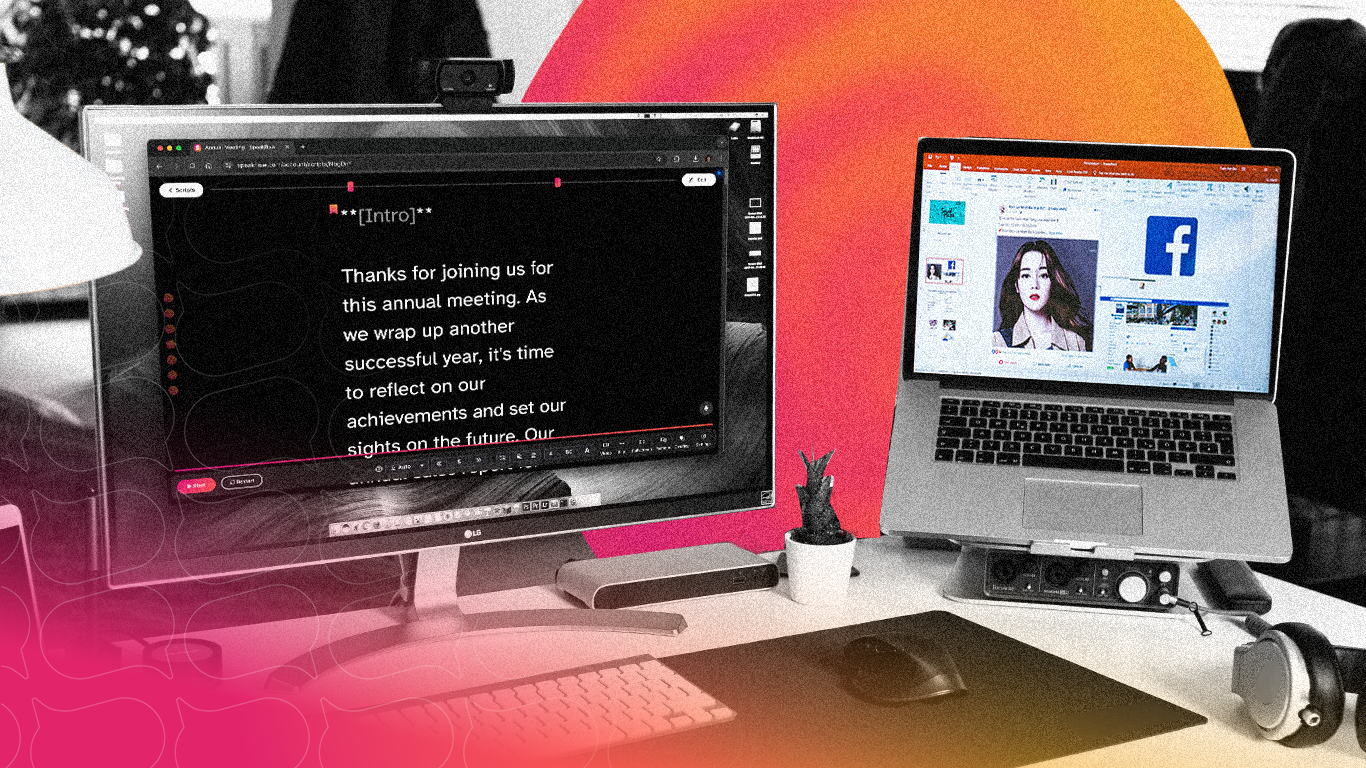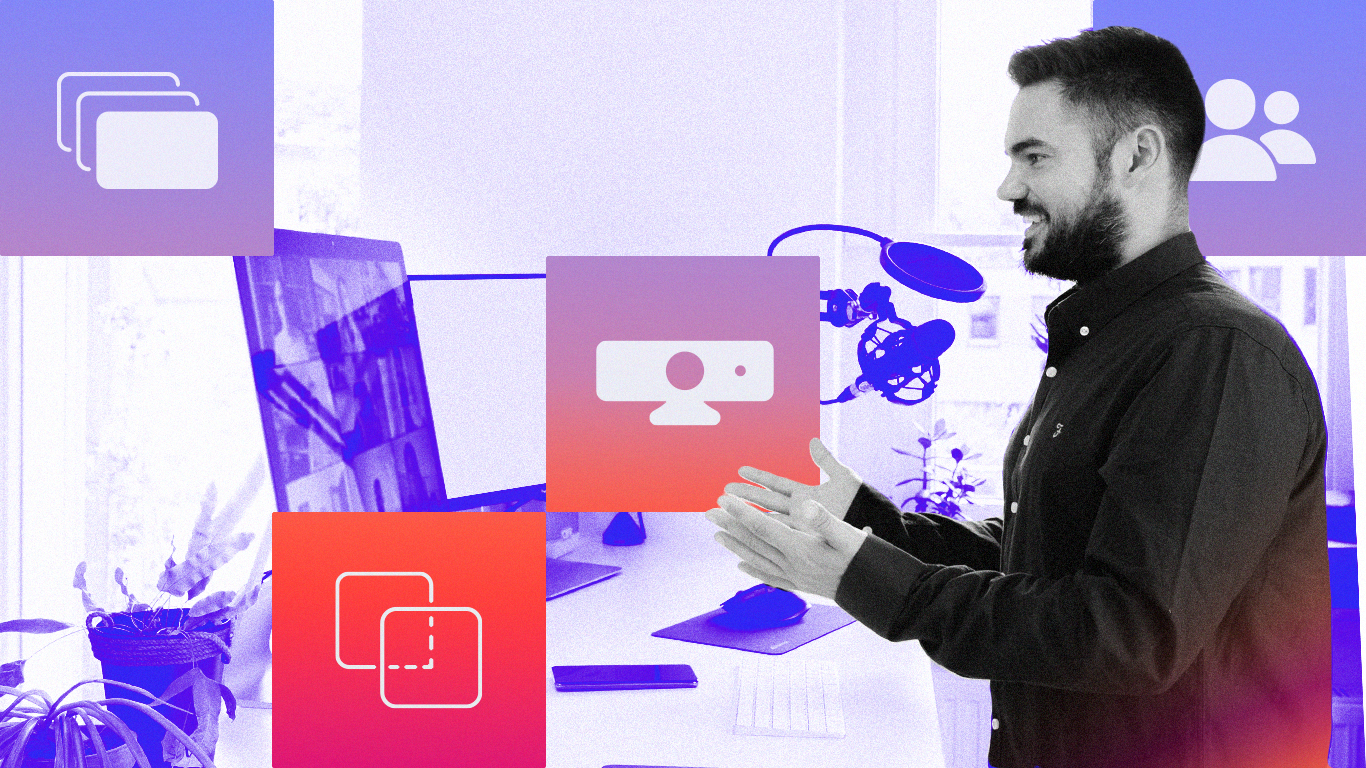Why Every Presenter Should Consider a Confidence Monitor for Their Next Talk
A confidence monitor shows you where you are in your script, slides, or key points, helping you stay on track.

Presenting live—whether it’s a webinar or a crowd in front of you—can feel like juggling a million things at once. Your mind races as you keep track of slides, notes, and your timing. This is where confidence monitors come in to save the day. They’re not just another gadget—they’re your secret weapon to keep everything flowing smoothly. Let's talk about why they’re game-changers, how they work, and some real-world examples that show their power.
What Is a Confidence Monitor? (And How It Differs from a Teleprompter)
At its core, a confidence monitor is a screen placed in front of you (usually near the stage or on your desk) that displays key information like your script, presentation slides, or other important visuals—without needing to look at your laptop or projector. This allows you to stay in control and keep your eyes on the audience while still being connected to your content.
Now, here's the key distinction: a teleprompter and a confidence monitor are often confused, but they serve slightly different purposes.
- Teleprompter: Traditionally used in TV broadcasting, a teleprompter scrolls your script automatically while you speak, keeping your words synchronized. You follow the scrolling text to deliver your lines without looking away.
- Confidence Monitor: While it may seem similar, a confidence monitor doesn’t automatically scroll your script. It’s more of a static reference point that displays your content for easy access during a presentation. Think of it as a safety net—it shows you where you are in your script, slides, or key points, helping you stay on track.
Real-World Examples: Who Uses Confidence Monitors?

Confidence monitors are not just for tech-savvy speakers—they’re used by some of the world’s top presenters. Here are a couple of examples:
- Award Shows: Next time you watch an award show, pay close attention to the presenters. Those smooth transitions, perfectly timed lines, and seamless delivery? Chances are, those stars are using confidence monitors. Whether it’s the Oscars, Grammys, or the Emmys, the hosts rely on these monitors to keep track of their scripts, manage timing, and stay engaged with the audience without missing a beat. The teleprompter scrolls their script while the confidence monitor shows them key cues, like the names of the nominees or the next presenters.
- TED Talks: TED speakers are some of the most captivating speakers on the planet. How do they pull it off? Many of them use confidence monitors to help guide their talks. These speakers often have a lot of content to deliver, and a monitor keeps everything in front of them, organized, and ready to go. Whether it's for a live audience or streamed online, a confidence monitor helps them stay focused without the need to rely on notes or slide transitions.
- Corporate Presentations: Think of CEOs giving product launches or keynote speakers at large conferences. Confidence monitors are the unsung heroes that keep them calm, collected, and in control of their messages. With so many moving parts (slides, audience reactions, timing), the monitor ensures they stay on course.
Getting Set Up
Here’s the trick: The first step is knowing how to set it up and get it syncing with your presentation. If you’re used to jumping between windows or scrolling through notes, it can get messy. But with the right configuration, it’s smooth sailing.
- Positioning: Keep it in your line of sight. A quick glance at your monitor should feel natural, not like you're shifting your whole focus.
- Syncing: Whether you’re using a teleprompter app or presentation software, get it connected to your device and ready to roll.
Don’t worry—this process is simple once you’ve got the hang of it.
Making It Work for Webinars vs. In-Person Talks

It’s important to remember that a confidence monitor can work for both virtual and in-person talks, but the approach is a bit different.
- In-Person Presentations: Picture this: you’re standing in front of your audience, delivering your message while making eye contact. The confidence monitor? It helps you stay on track without looking down at your notes. The best part? You’re still connecting with your audience, keeping things engaging.
- Webinars: With a webinar, the tech side can get overwhelming. You’re managing your slides, monitoring the chat, and keeping an eye on your audience through the screen. A confidence monitor here makes it easier to focus on what you’re saying without the constant back-and-forth between tabs. Think of it like a virtual assistant that helps you keep pace while engaging with your audience.
Practice Makes Perfect
Look, there’s no shortcut to a great presentation, but a confidence monitor can certainly give you a boost. Here’s how to make sure you’re using it like a pro:
- Practice with the monitor on. Record yourself and see how comfortable you are using it.
- Adjust your pacing. Watch how often you glance at it and how naturally it integrates with your talk.
- Perfect the timing. Use the monitor’s timer and bookmarks to keep you in sync. Knowing you’re on track helps boost your confidence and keeps the flow going.
Pro Tip: Stay Engaged
One last thing—remember that a confidence monitor isn’t just a crutch. It’s a tool to help free you up to focus on your delivery. The more you use it, the less you’ll have to rely on it. So while you’re checking your script, don’t forget to check in with your audience. Engagement is key, and with the monitor on your side, you can keep that connection strong.
Wrapping It Up
Confidence monitors are more than a convenience—they’re a game changer. Whether you’re speaking in person or delivering a webinar, using this tool can make all the difference in keeping you organized, focused, and confident. So go ahead, give yourself the gift of smooth, seamless delivery—because you’ve got this.
Additional Resources
Written by Jade Mburu
Edited by Speakflow Team
Edited by Speakflow Team
The journey from anxious speaker to confident presenter doesn't happen...
Using additional footage to add context is a simple yet powerful way to...
An online voice-activated teleprompter with professional-grade features
55866963f40557965ea6e9d87e7349f829c34b77